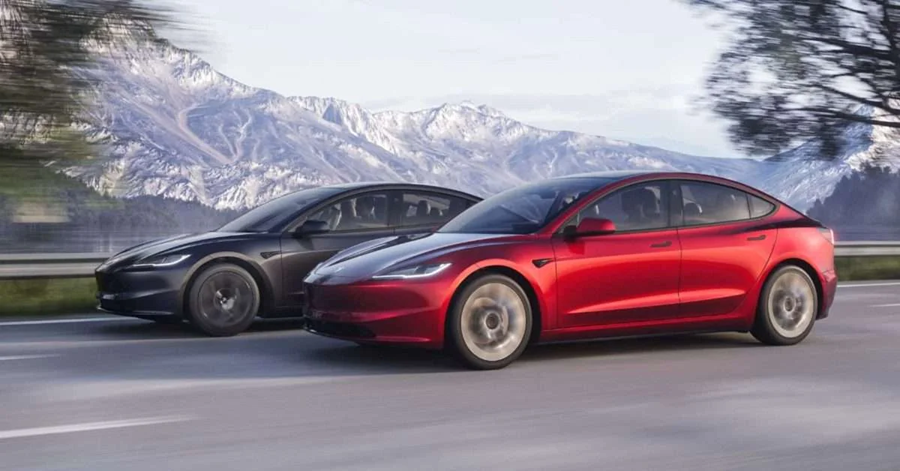
The Inflation Reduction Act (IRA) is a “free electric bank account with your name on it.” It’s packed with rebates and tax credits that will help Americans purchase everything from EVs to electrical appliances to heat pumps. Check out this easy-to-use IRA savings calculator from Rewiring America that tells you what you’ll get.
Rewiring America is an electrification nonprofit whose “purpose is to make electrification simple, measurable, and inevitable.” We are upgrading to 200 amps and then installing rooftop solar and storage this month, so this savings calculator provided information that made me pretty happy. I found out in two minutes that we can claim tax credits for solar, battery storage, and our electrical panel upgrade work.
We recently bought a US-manufactured 2023 Volkswagen ID.4, and the Rewiring America calculator confirmed which tax credit the car qualified for – we, fortunately, got the full $7,500 tax credit.
In my electrification journey, I’m finding that I need to do my own research and advocate for myself, as electricians, heat pump installers, and car dealerships are still learning about how the new tax credits and rebates work. (Then I share what I learn with you – that is my job, after all.)
The folks I’m working with want to know, and they want to help me in turn. Everyone I’m working with is concerned about climate change, and they appreciate it when I share the information I find with them.
Inflation Reduction Act savings calculator – the “Smith family”
On July 27, the US Department of Energy (DOE) rolled out guidelines for states, territories, and the District of Columbia to apply for their share of $8.5 billion in electrification and energy efficiency rebates provided by the IRA. That funding is going to save consumers a lot of money on home improvements and electricity bills.
Energy Department Deputy Secretary David Turk said on a call with reporters last week that the DOE expects that “these rebates will start to be available to consumers in some states as early as the end of this year and continuing on a rolling basis in 2024.”
Rewiring America has a disclaimer on its Inflation Reduction Act savings calculator page about state rollouts:
The rebates may be implemented differently in each state, so we cannot guarantee final amounts, eligibility, or timeline.
(Like Florida, for example – Governor Ron DeSantis rejected $377 in funds. I’m sorry, Floridians.)
Here’s how the IRA Savings Calculator works: Type in your zip code, homeowner status (renters qualify, too), household income, tax filing status, and household size into the IRA Savings Calculator, and click “Calculate!”
It then displays your personalized incentives and splits out tax credits from upfront discounts (i.e., rebates).
I created the “Smith family” as a case study: a hypothetical family of four, homeowners, household income $100,000, joint tax filing, zip code 05001 (that’s Vermont).
The Smiths qualify for no upfront discounts (rebates) at present – those will come later this year – and they qualify for $23,100 in available tax credits right away, which means the Smiths can claim them on their 2023 taxes. They have an estimated energy savings per year of $1,450, and the latter is based on energy costs in Vermont.
As upfront discounts (rebates) are based on a percentage of area median income, the Smith’s area median income is $97,600, as they live in the 05001 zip code area. You can find your area median income using this Area Median Income Lookup Tool from Fannie Mae.
Case study: Electric stove rebate
The High-Efficiency Electric Home Rebate Act (HEEHRA) provides point-of-sale consumer rebates to help low- and moderate-income US households electrify their homes.
For low-income households (under 80% of Area Median Income), the Electrification Rebates cover 100% of your electric/induction stove costs up to $840. For moderate-income households (between 80% and 150% of Area Median Income), the Electrification Rebates cover 50% of your electric/induction stove costs up to $840.
Total HEEHRA discounts across all qualified electrification projects are capped at $14,000.
Rewiring America also provides an easy-to-understand online guide to the IRA called “Go electric! (now).” You can access that here.
Author: Michelle Lewis
Source: Electrek




Rhonda Santis rejected $377,000,000 for Floridians, not $377.
All these incentives are terrific. They do a lot of good. But they are not perfect. Some tweaks could make them better.
I have read somewhere that this might be changing, but car tax credits (and others as well?) have all had to be taken in a single calendar year.
Some people don’t make enough to have a $7500 tax bill in a single year. So less-well-off folks get a smaller credit than better-off people
So if the Smith family wanted to replace their gas stove with a new electric or induction stove in late 2023, then they would qualify for 50% of electric/induction stove costs, up to $840, upfront, as their income ($100,000) is over 100% of area median income ($97,600) in their 05001 zip code: